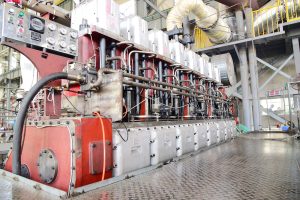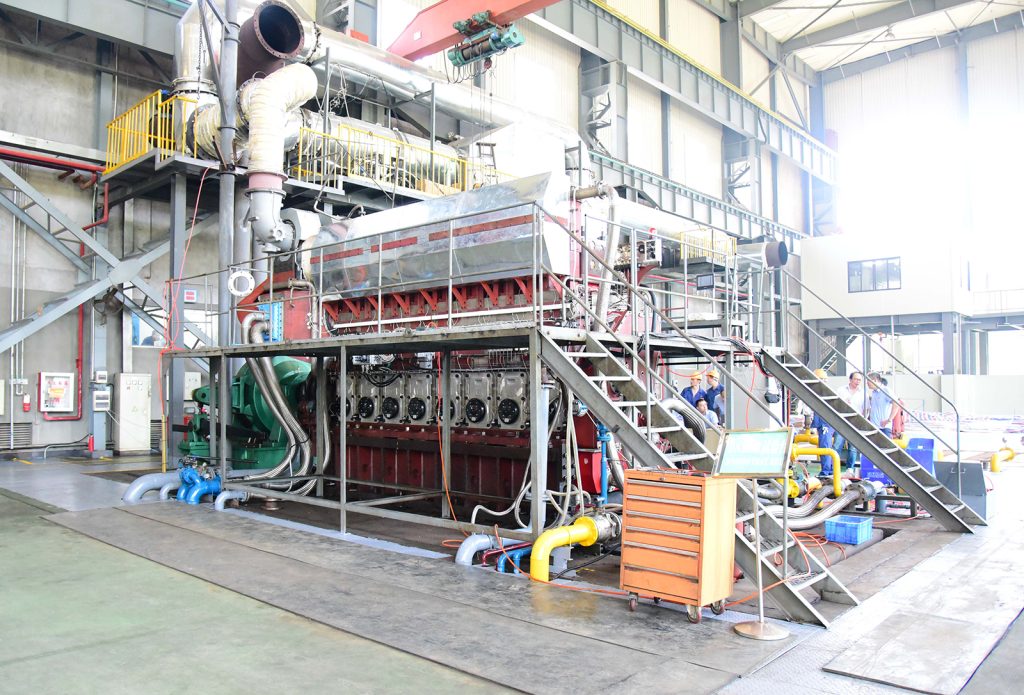On August 25th, the NL8340CR electronically controlled high-pressure common rail engine independently developed by C.S.I. Group was successfully ignited on the high-power test bench in the assembly workshop, marking a successful breakthrough in the research and development of China’s marine medium-speed high-power common rail diesel engine with exceeding 910 Ps per cylinder and combustible HFO.
In the context of increasingly severe energy and environmental protection policies and the “dual carbon” strategy, the shipping industry is facing the arduous task of emission reduction and decarbonization, among which the energy conservation and emission reduction of the MARINE POWER PLANT is the key point. After the many mature technologies’ applications such as high-efficiency turbocharging, Miller cycle, electronically controlled high-pressure fuel injection, and multi-fuel technology, the technology of electronically controlled high-pressure common rail fuel injection has become the key one developed in recent years. As early as five years ago, the electronically controlled N210CR engine with Chinese common rail technology developed by C.S.I. Group had passed the test of designing finalization. Now the technology of domestic common rail is applied to the 8-cylinder, cylinder bore 340 mm, long-stroke engine, achieving more than 910 Ps per cylinder, it is the first of its kind in China.

Compared with traditional technologies, the use of electronically controlled high-pressure common rail technology can reach the target of lower fuel consumption and emission reduction, and the engine can be controlled more precisely at different speeds and operating conditions, be optimized and customized according to the working conditions. The successful ignition of the electronically controlled high-pressure common rail NL8340CR engine broke the foreign monopoly in this technical field, realizing the import substitution, then opened a new chapter in the commercial application of the high-power high-pressure common rail system with China’s independent intellectual property.

